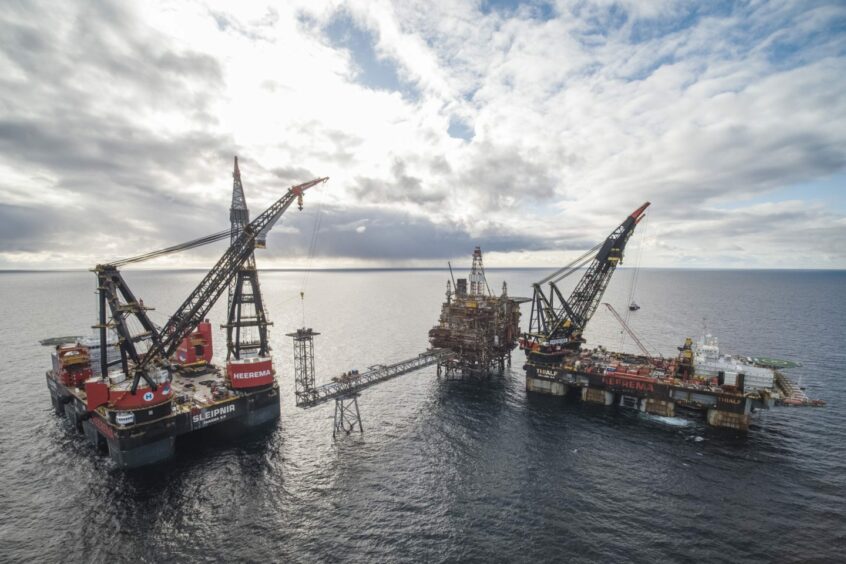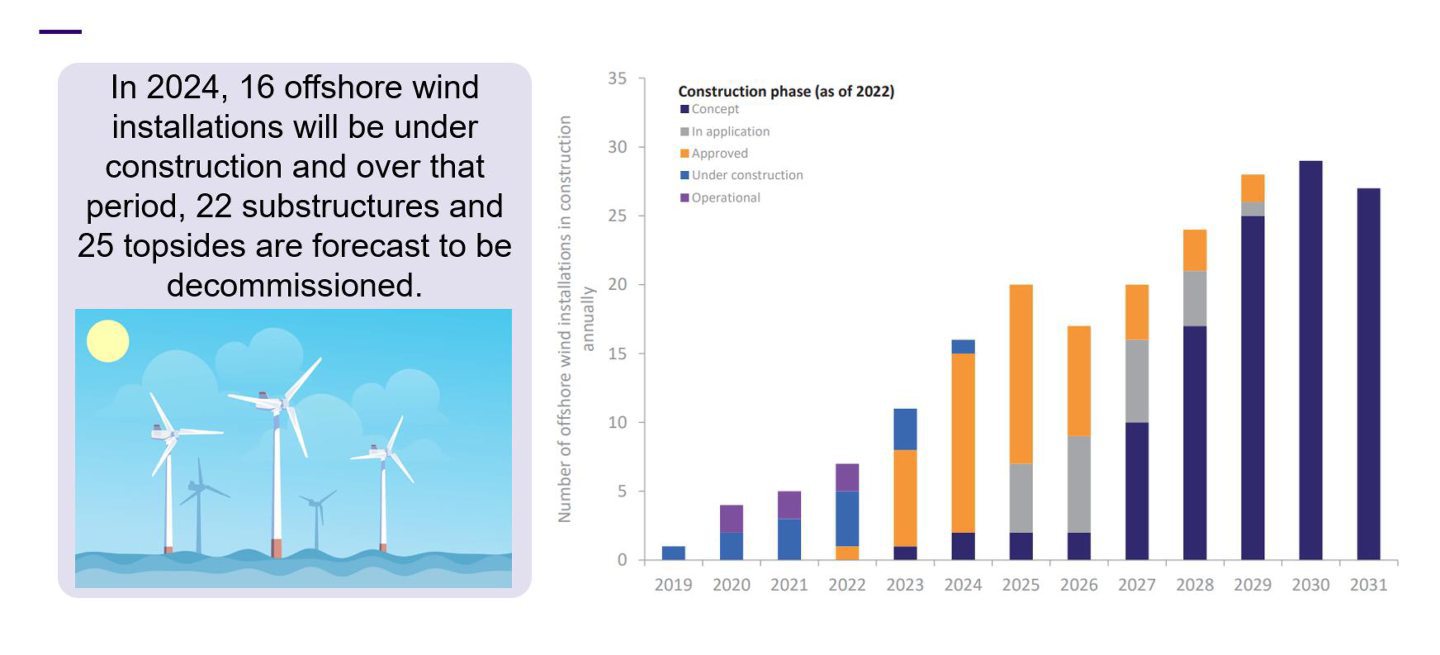
The North Sea is projected for a major crunch of skills and resources for oil and gas decommissioning and offshore wind installation next year.
“Something has to happen here,” said OEUK decommissioning manager Richard Thomson, to ensure there’s a way forward.
2024 is forecasted to see 16 offshore windfarms put in place, 22 oil and gas substructures removed and 25 platform topsides removed, according to research from the trade body.
“Not one single number of those three separate items has ever been done before in a year,” says Thomson.
“The decommissioning industry alone has never done 22 substructures in a year, so to be able to do that at the same time as 16 offshore wind installations and 25 topsides. . . that’s forecasted for one year.
“So something has to happen here. That’s just talking about your platform prep, your heavy lift, your post COP work – that’s a niche set of people that do those works.”
The risk is that North Sea decommissioning and other work is kicked down the road, and targets missed, as the supply chain is overwhelmed amid a skills shortage.
“A lot of the skills, a lot of the assets, a lot of the yards, a lot of what we generally use for the lifecycle of decommissioning projects are being used for offshore wind at the same time.”
Bottom line: if the oil and gas industry and offshore wind sector don’t work together then there is a risk over whether this work can be achieved.
The same skills and resources which are expected to see 50GW of offshore wind installed by 2030 are also expected to deliver billions of pounds of decom work for the UK.
“I’m not a fan of shifting the timeline,” says Thomson, a project manger by background.
“I’m also not a fan of the word ‘collaboration’ because I think it gets used too much.
“But what is behind that word I am a fan of. Cross sector and cross industry . . . first of all, all energy sectors needs to help each other.
“We need to give more visibility – I know we’re trying – but more visibility can be given. The supply chain needs the carrots to be right in front of them, we need people to see it – we can’t ask everyone to innovate, to save money, without showing them these opportunities.
“And I think we are showing the opportunities, we certainly have done in the (decommissioning insight report published last year).
“I think everyone needs to come together, there needs to be more around the table, and cross-sector is extremely important.
“Offshore wind and oil and gas are all energy sectors – they’re not completely separate, a lot of the companies are doing the same thing, so we need to make sure we’re all talking, we’re all sharing assets.”
Skills for North Sea decommissioning
It also comes amid a wide skills shortage across the energy sector.
Feedback from OEUK members is that “it’s difficult to get people in general, never mind decommissioning”, says Thomson.
OEUK is working with institutions including colleges and universities to drum up interest for the sector – which is a key pillar of the energy transition and is expected to continue for decades to come.
“To give blunt context – I will retire while there’s still about 20% of the North Sea left to be decommissioned,” says the 38-year-old.
“Stories of decommissioning need to be a bit more positive and louder. It’s an integral part of the energy transition, which can’t happen without decommissioning of assets.
“What better way to go from one area to another, than to ride it through the entire lifecycle? And to do that extremely quickly and learn from all this people.
“The decommissioning community has been doing this for the last 20 years, but it’s not a large community and we need to expand that.
“We want to scream from the rooftops that this is here – we want to spread the word so people see this as an opportunity.”
Recommended for you


 © Supplied by OEUK
© Supplied by OEUK © Supplied by DC Thomson
© Supplied by DC Thomson